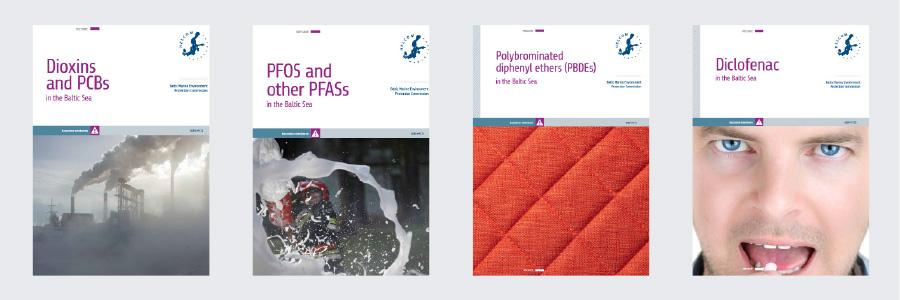
In a bid to better understand the effects of certain hazardous substances on the Baltic Sea, HELCOM, in collaboration with Stockholm University’s Baltic Sea Centre, has compiled the latest science on selected chemical contaminants.
The results were published in four reports, namely on dioxins and PCBs, brominated flame retardants, PFOS and PFAS, and diclofenac.
“We must identify the major sources of the hazardous substances and understand how they move in the ecosystems to be able to do something about the problem,” said Emma Undeman, a researcher at Stockholm University and lead author of the reports.
The reports give insights into the sources and pathways to the sea of the addressed substances, as well as on how their concentrations have changed in the Baltic Sea over time.
Dioxins and PCBs, mainly by-products from industrial processes, primarily stem from atmospheric emissions, further persisting in the environment and accumulating in the food chain. This is a particular cause for concern since these substances are known for their adverse effects on the nervous, immune and endocrine systems of living organisms.
The levels of brominated flame retardants (PBDE) – which are now either banned or regulated but were heavily used in the past as additives to prevent ignition and delay spread of fire such as in furniture and curtains – seem to be declining, but trends show that it could take up to 40 years for these contaminants to reach safe levels in the Baltic Sea.
With regard to PFOS and PFAS, used for instance in metal coatings such as Teflon or in firefighting foams, the main pathways are discharges from wastewater treatment plants, and runoff from contaminated sites via groundwater and drainage ditches. Research on PFOS in Baltic Sea biota further indicates that transport to the sea has dropped but that concentrations have not yet declined, pointing towards a high persistence in the marine environment.
Diclofenac, a widely used painkiller that is water soluble, mainly enters the sea through wastewater treatment plants which have a low removal rate of the drug. Despite good absorption by the human body when ingested, diclofenac is overused, leading to significant excretions reaching sewer systems. Some of the diclofenac in wastewater may also originate from dermal application which has a low absorption rate by the body.
The four reports support the update of the HELCOM Baltic Sea Action Plan (BSAP), HELCOM’s strategic programme of actions for restoring good ecological status of the Baltic marine environment. The BSAP is due to be updated in 2021.
Information from the reports will notably serve to evaluate the efficiency of currently implemented measures under the present BSAP, and for suggesting additional measures needed to improve the Baltic Sea’s state in regard to the reduction of concentrations of hazardous substances.
Download the reports:

